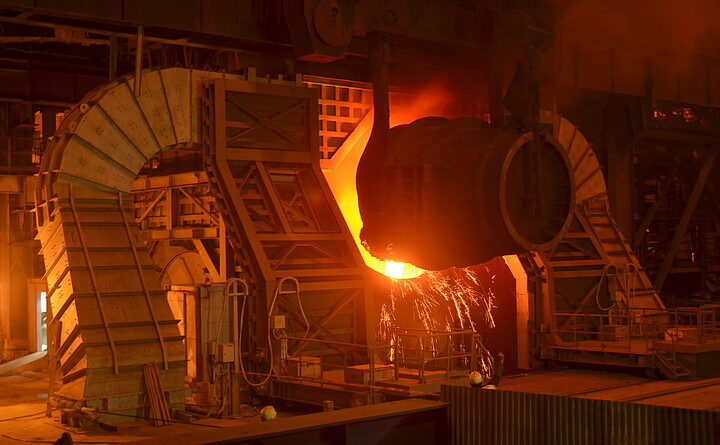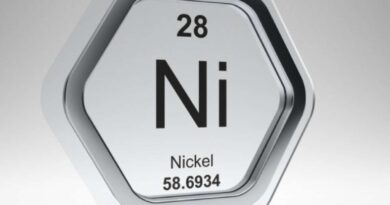AMSA capacity utilisation increased from 42% in 2020 to 60% in 2021
Excluding Saldanha Works, which through an orderly and commercial wind-down was placed under care and maintenance early in the second quarter of 2020, ArcelorMittal South Africa’s average capacity utilisation increased from 42% in 2020 to 60% in 2021 and is currently at 79%.
Crude steel production (including that from Saldanha Works) increased by 34%, or 769 000 tonnes, from 2,2 million tonnes to 3,0 million tonnes in 2021. Crude steel production marginally increased by 3% to 1,53 million tonnes in the second half, compared to 1,49 million tonnes in the first half of 2021.
In addition to the significant maintenance programme undertaken in 2021:
- in November and December, Vanderbijlpark Works’ second blast furnace underwent a successful scheduled maintenance programme targeting refractory shotcreting, and certain electrical components, conveyors and structures; and
- in December, Newcastle Works’ blast furnace similarly underwent a refractory shotcreting following the postponement of its mini-reline to the second quarter of 2022 due to a combination of market dynamics and to ensure the availability and preparedness of appropriate skills (amid pandemic-related availability factors).
After safety, production reliability and stability to enable improved delivery to the Company’s customer base, are key focus areas. To deliver against these objectives, efforts continue to attract new process- and maintenance-related skills and to develop existing skills though specialised training programmes, all supported by a refreshed and more structured management system.
As reported in July 2021, the safety incident at Vanderbijlpark Works’ coke-making unit was the primary contributor to the lower commercial coke production. For 2021, although commercial coke production was 43% lower at 160 000 tonnes, supplemented with available inventory, sales volumes remained flat at 308 000 tonnes. Sales fell by 40% to 115 000 tonnes in the second half compared to 193 000 tonnes in the first half of 2021 due to lower inventories and a slower post-incident production recovery.
FINANCIAL RESULTS
ArcelorMittal South Africa reported an EBITDA of R8 569 million against R37 million in the previous period, while its operating profit increased substantially from a loss of R963 million in 2020 to a profit of R7 976 million. The headline earnings of R6 860 million recovered strongly from a loss of R2 033 million, amounting to a 615 cents per share profit against a 185 cents loss for 2020.
EBITDA increased by 66% to R5 351 million in the second half, compared to R3 218 million in the first half of 2021.
Revenue increased by 61% to 39 708 million due to a 13% rise in total steel sales volumes and a 47% rise in net realised steel sales prices. Revenue increased by 14% to R21 112 million in the second half compared to R18 596 million in the first half of 2021.
The Company’s raw material basket (iron ore, coking coal, and scrap), representing 43% (2020: 41%) of cash cost per tonne, was 10% higher in rand terms, which is satisfying given the 42% increase in the international raw material basket in rand terms. This reflects the work done in diversifying the sources of raw materials. Consumables and auxiliaries represented approximately 30% of cash cost per tonne (2020: 32%), increased by 5%. Electricity tariffs increased by 14%.
Fixed costs increased from R5 066 million in 2020 to R7 428 million in 2021, an increase of 47% reflecting higher activity levels as well as efforts to improve reliability and quality. Fixed costs increased by 20% to R4 052 million in the second half compared to R3 376 million in the first half of 2021 in response to the higher maintenance activity.
Net financing charges were marginally up at R1 163 million (2020: R1 123 million) due to a higher interest expense and the unwinding of the discounting effect on provisions.
The debit fair value adjustment on investment properties of R228 million (2020: R118 million) is based on the latest fair value of these properties obtained from independent valuators.
OUTLOOK FOR THE FIRST HALF OF 2022
The outlook for global steel demand remains generally positive heading into 2022. In South Africa and neighbouring countries, it is likely that demand will ease back to more moderate growth levels.
Due to a combination of supply side constraints and interventions, along with the sporadic demand momentum (especially in developing economies), international steel prices are off the highs of 2021, although prices continue to receive support from robust raw material prices.
Overall, this view is conditional upon central banks’ responses to rising inflation, the extent to which growth slows in China and the progress with vaccination coverage, especially in developing countries.
The Company targets improved production reliability and greater customer focus into 2022, though volume recovery will be dependent on the reliability of the rail service.
After safety, securing the first benefits of the Value Plan Programme (VPP) will be the key focus area.
The Company’s financial results will continue to be impacted by exchange rate volatility.




